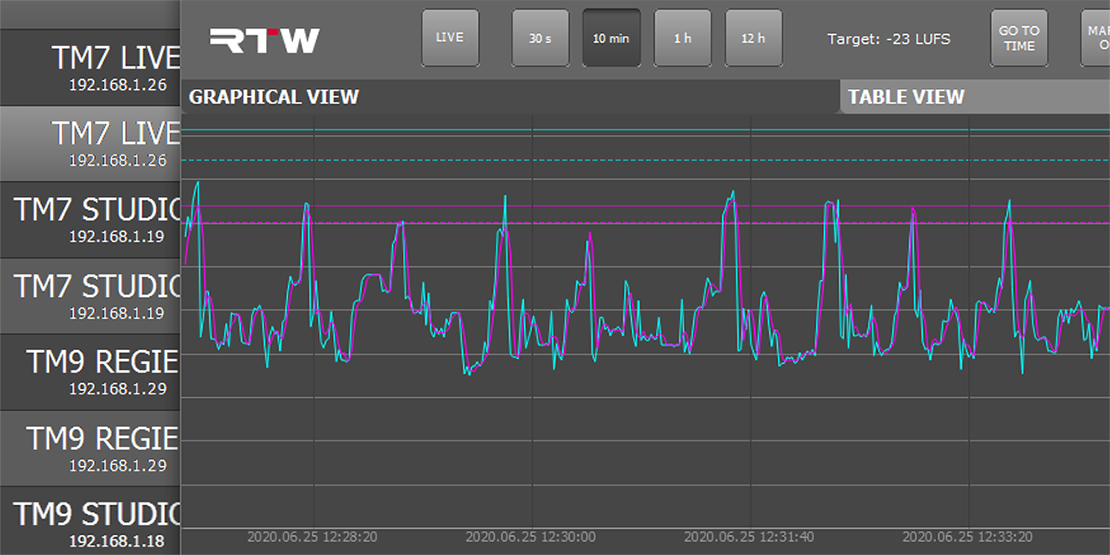- Why did the crowd sound so loud right there?
- Why couldn’t we hear what the speakers said during this passage?
- What happened after 16 minutes – I think we had an audio overload?
- Did we at all comply with the loudness standards?
For that purpose, we have built the Loudness Quality Logger, or LQL, which does exactly that: logging a number of audio-related measures either for a certain time period or continuously. Especially in countries that have penalties in place if a broadcaster does not comply, this is of utmost importance. For example, in the US the CALM Act is meant to ensure that broadcasters comply.
After the measurements have been carried out, you get an easy to read graph, and you can generate a PDF report for further evaluation.
LQL is a PC application that works with TouchMonitor TM7 or TM9 via ethernet.
For time reference, it can use either the internal realtime clock of the TouchMonitor or the timecode that is delivered within the audio from the TouchMonitor.
If a station runs a timecode based clock, that clock information can be used as the time reference in the log file, and in film post production, it is possible to include the film timecode as a time reference in the log file.
Importantly, while a key purpose of LQL is to ensure peace of mind that you can deliver proof that your live program did not exceed the current loudness standards in your area, there is also an additional benefit worth pointing out. With the reports at hand, these represent powerful sets of data that you can use to go over the details at a later point and potentially get insights that will help you improve the audio quality of future programs within the loudness standards. Please note that it is indeed sets of data (the conducted measurements) and not the actual audio that is logged.
In other words, complying with the loudness standards is no guarantee that everything sounds as great as it possible could. Within the scope of the loudness standards, you could improve the quality of your content to decrease the amount of viewer/listener complaints.
|
Sign up to learn about new blog posts! |
|
|
Up to 40 sources
Now, let’s take a closer look at how you may create your LQL setup. When working in real time, the LQL can work with up to 20 TouchMonitors, each with two Audio Groups. So, if you max it out, you will be surveilling 40 Audio Groups, each representing an audio source with audio channel layouts from Mono and up to 7.1 Surround.
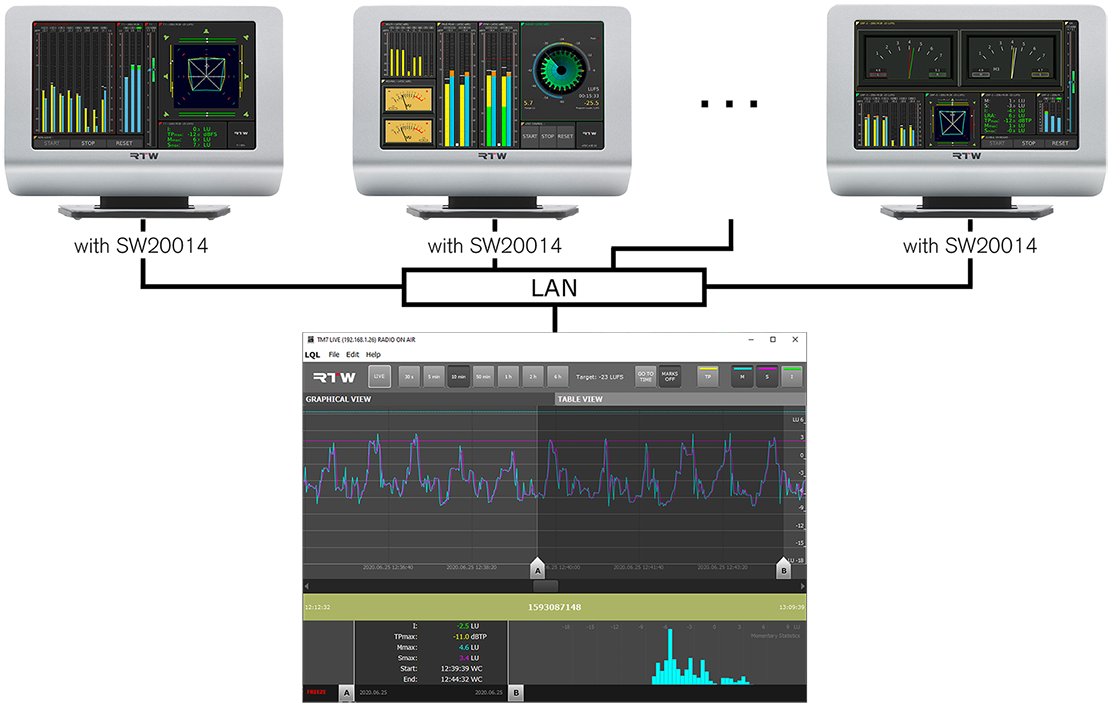
Complete Overview
In case you need to monitor vast amounts of TV channels, the Main Overview Window will become your new best friend. The overview window shows all connected devices, as well as the status of each audio group in an easy to grasp view.
The status of each audio group is marked by a ‘traffic light indicator’ and will immediately indicate if you need to pay attention to any lost connections, true-peak overloads or loudness-related problems.
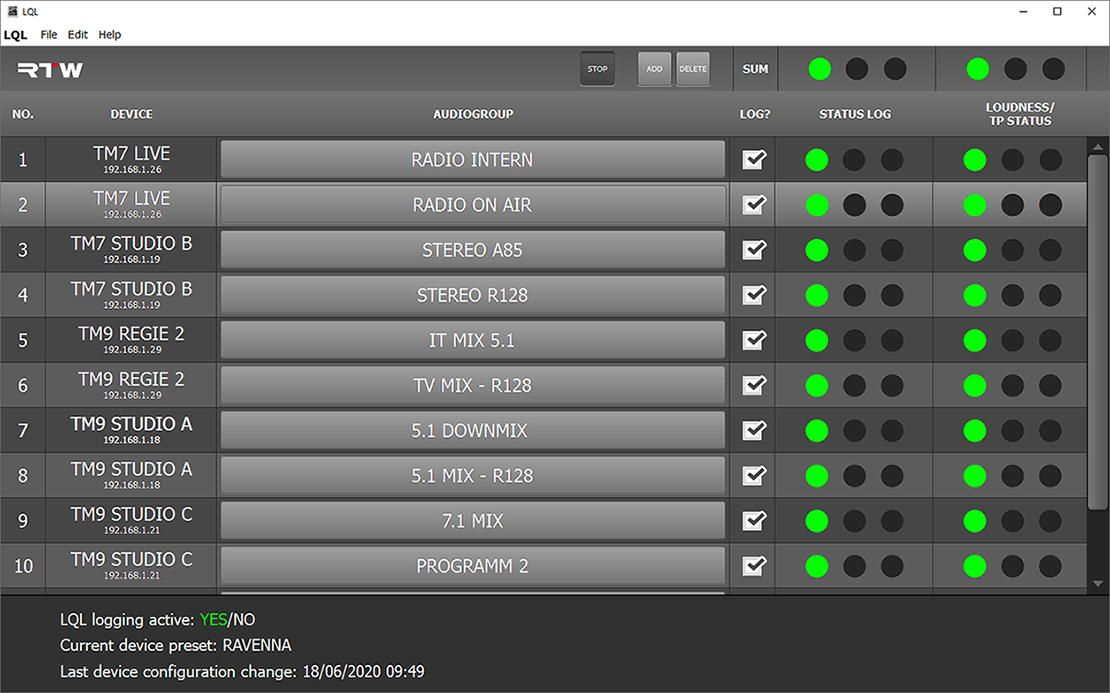
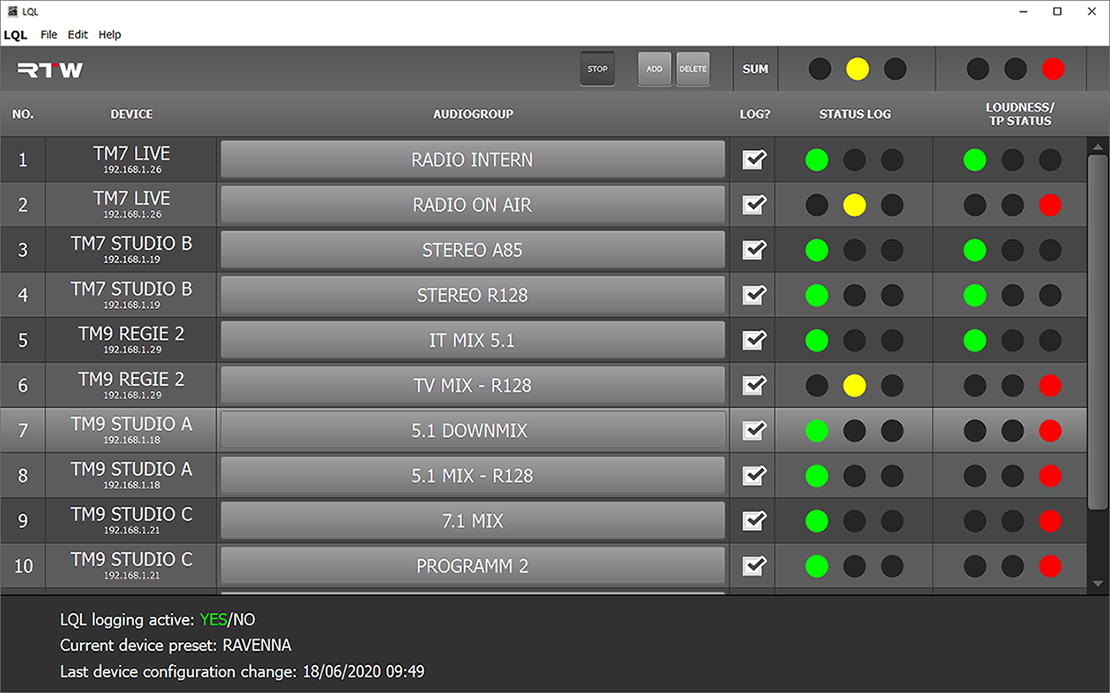
Graphical View
In case you want to dig into the nitty-gritty details, simply click to an audio group to open the graphical view, and you have got all of those details available.
In a single view, the graph can show:
- True Peak (TP)
- Momentary Loudness (M)
- Short Term Loudness (S)
- Program or Integrated Loudness (I)
In addition to that, a numerical section shows the values calculated for the entire area:
- Program or Integrated Loudness (I)
- TPmax
- Mmax
- Smax
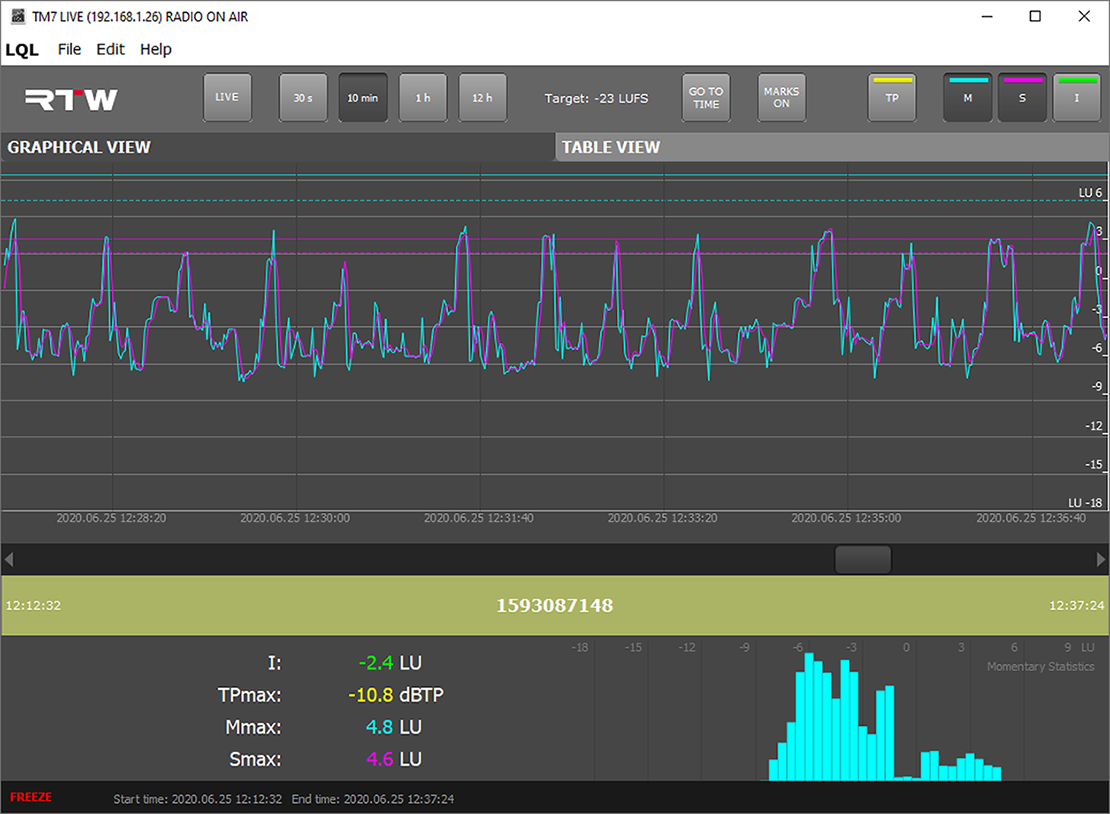
Zoooooom
The graph is able to display time ranges between 30 seconds and 72 hours, and furthermore you can zoom in on specific areas using the A/B markers for an even more detailed view. In short, you can quickly get an idea of how your program material performed over several days, or you can pinpoint specific sequences in case you spot any anomalies that grab your attention.
Please note that when zoomed in, the numerical section will be recalculated and then shows the loudness numbers related to the zoom area.
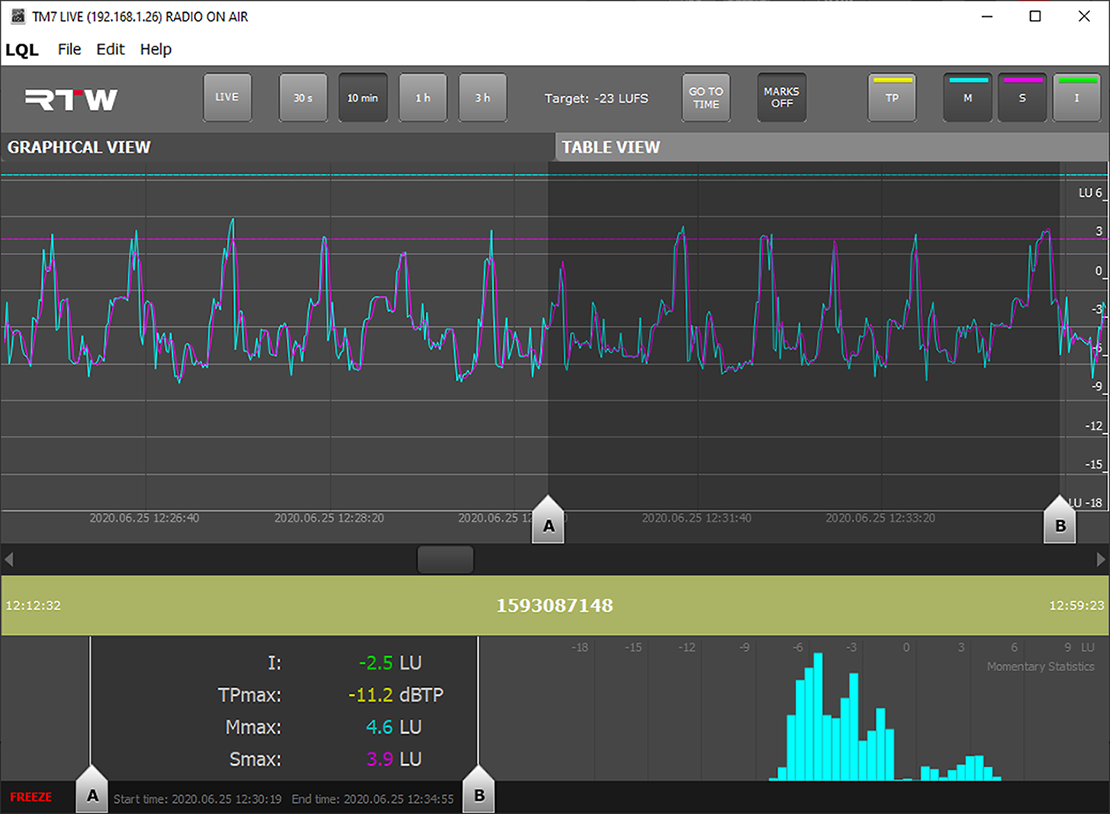
|
Sign up to learn about new blog posts! |
|
|
Technically Spoken
What is required to run the LQL?
LQL itself is a free download from our website.
- RTW TouchMonitor TM7, TMR7 or TM9 with software version 8 or higher
- Software license SW20002 Loudness and SPL
- Software license SW20014 Logging Data Server
- If you work with Surround, you'd also need the software license SW20001 Multichannel Mode on TM7 and TM9
Additional for time-code based measurements:
Software license SW20008 Timecode Reader
LQL Features
- Detailed logging application for Windows® based PC's
- Monitors up to 40 sources, each ranging from mono to 7.1 Surround
- Works with up to 20 TouchMonitors simultaneously
- Timecode or realtime based monitoring
- Status overview of all sources in one simple overview screen
- Detailed graphical view with adjustable time range
- Monitors Program or Integrated Loudness (I), Momentary Loudness (M), Short Term Loudness (S) and True Peak Max (TP)
- Zoom feature to focus on specific parts of the measurement
- User configurable alarm to notify in case of audio issues, such as loudness legislation violations

